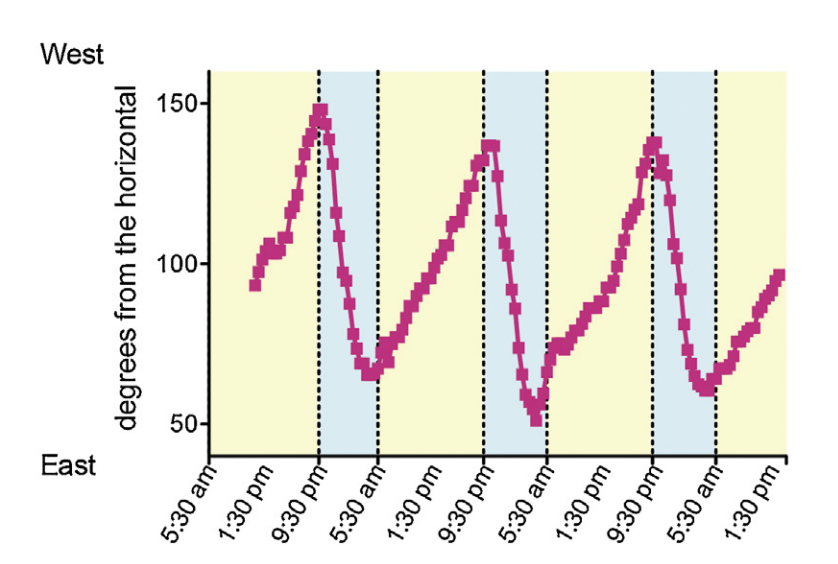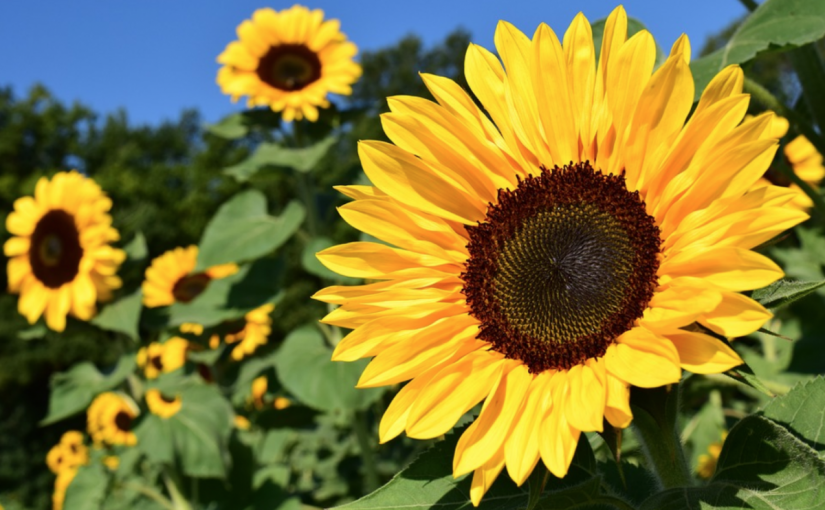Can you imagine lying down and facing the sun all day, everyday? As amazing as it would be at first I’m sure it would get to be too much after a while. But sunflowers live for the sun, they use a process called heliotropism to follow the sun’s movement; which is also known as solar tracking. Authors Joshua Vandenbrink, Evan Brown, Stacey Harmer and Benjamin Blackman who wrote Turning heads: The biology of solar tracking in sunflower state that, “during the day, the shoot apex continuously reorients, following the sun’s relative position so that the developing heads track from east to west. At night, the

reverse happens.” As, you see in the picture this is a graph of how fast and often the head of the sunflower turns compared to the time of day and direction of sunlight. Sunflowers start their day facing the east move to face the west during the day but then by the time the sun goes down they are back facing the east. Other plant biologists from UC Davis have now figured out how sunflowers use their internal circadian clock, acting on growth hormones to follow the sun while they grow. “The plant anticipates the timing and the direction of dawn, and to me that looks like a reason to have a connection between the clock and the growth pathway,” Harmer said. The light from the sun allows the sunflower to grow more rapidly. Once the sunflower has grown to maturity they stop following the sun. It really is crazy to think that Sunflowers don’t just use the sun for energy and food but they also use it for growth. It’s been proved that the east and west side of the Sunflower stem grow at different rates and times based on whether or not that side of the stem is facing the sun. Scientists Hagop Atamian, Nicky Creux, Evan Brown, Austin Garner, Benjamin Blackman, and Stacey Harmer who wrote Circadian regulation of sunflower heliotropism, floral orientation, and pollinator visits have investigated the heat levels of sunflowers when in the sun and whether or not there is any ecological advantages. They hypothesized that, “eastward orientation may promote sunflower attractiveness to pollinators through increased morning interception of solar radiation.”

B. Blackman, S. Harmer
In figure 2 you can see that the flower heats up more in the morning when it is east-facing. With this it was also shown that pollinators showed up five times more in the morning when the sunflower is warmer rather than in the afternoon when the sunflower is west-facing. All in all, it is rather amazing how Sunflowers are able to detect the rays of the sun and move accordingly in order to grow.
Look here for sources
